Nvidia At A New All Time High: How To Play The Pre- and Post Earnings Season ?
The Daily Brief - Nvidia ETFs, options strategies and some special trading ideas
(1) What's the buzz?
As NVIDIA approaches its highly anticipated November 2024 quarterly earnings report, all eyes are on the tech giant following an impressive close yesterday at an all-time high of $143.71 per share, marking a 4.14% increase.
The excitement is primarily fueled by the ramp-up in shipments of Blackwell chips, with market demand being described as "insane."
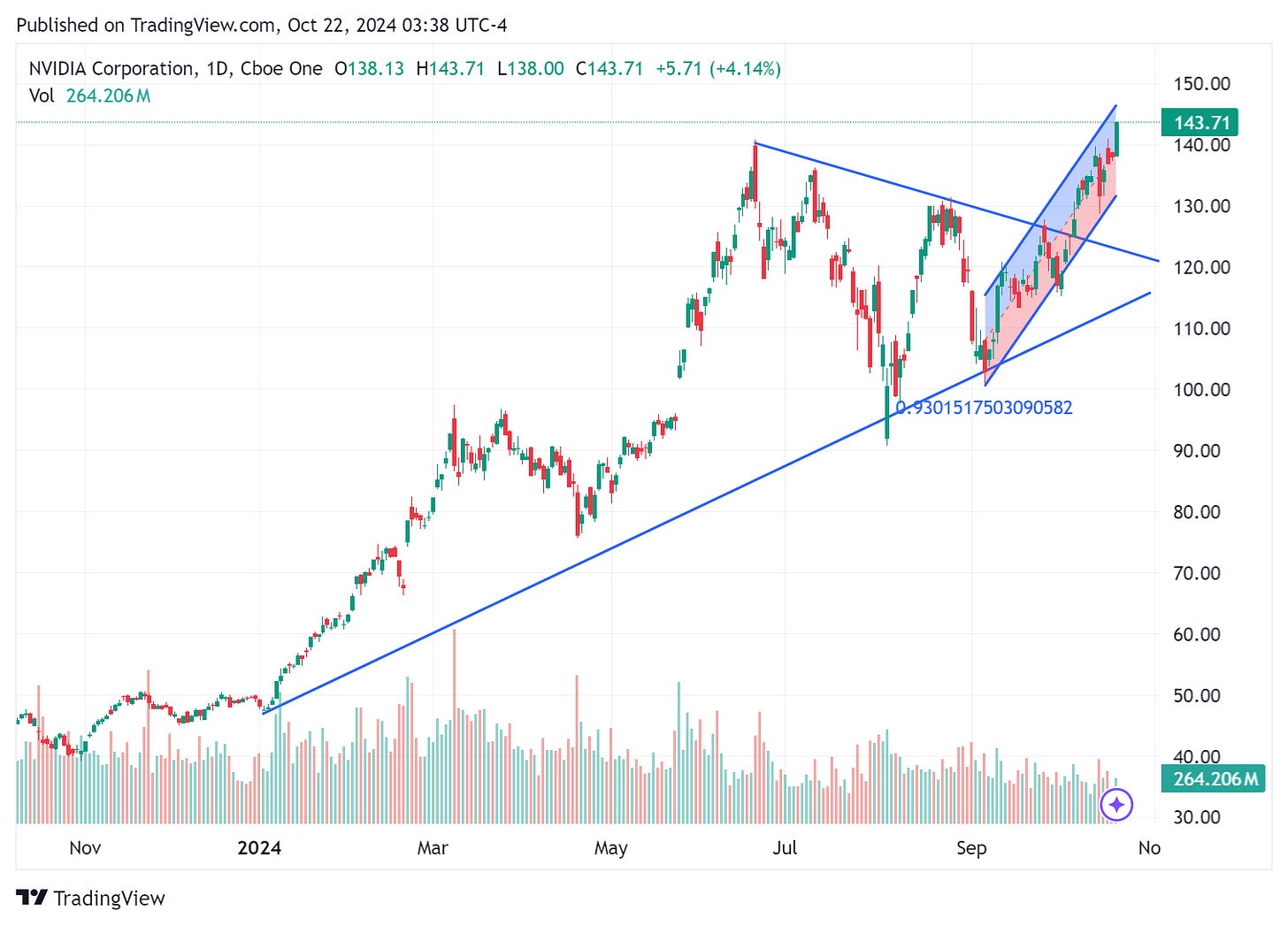
Nvidia’s market cap reached 3.541 trillion USD yesterday. Apple’s market cap is 3.626 trillion USD.
If Nvidia outperforms Apple by about 3 % in the days ahead, the company will become the biggest company in the world (as measured by market cap).
(2) So what?
NVIDIA has become the bellwether for the AI revolution and a key player in the broader tech sector. Its performance reflects not just its success but also a crucial indicator of the overall market’s direction.
With the Nasdaq hovering near its highs, a strong earnings report could propel the index to new all-time highs, leading the next leg of the bull market.
However, a disappointing result could signal the end of the AI-induced tech rally, potentially marking a pause or correction in the tech-driven market surge, leaving investors to reassess the growth outlook.
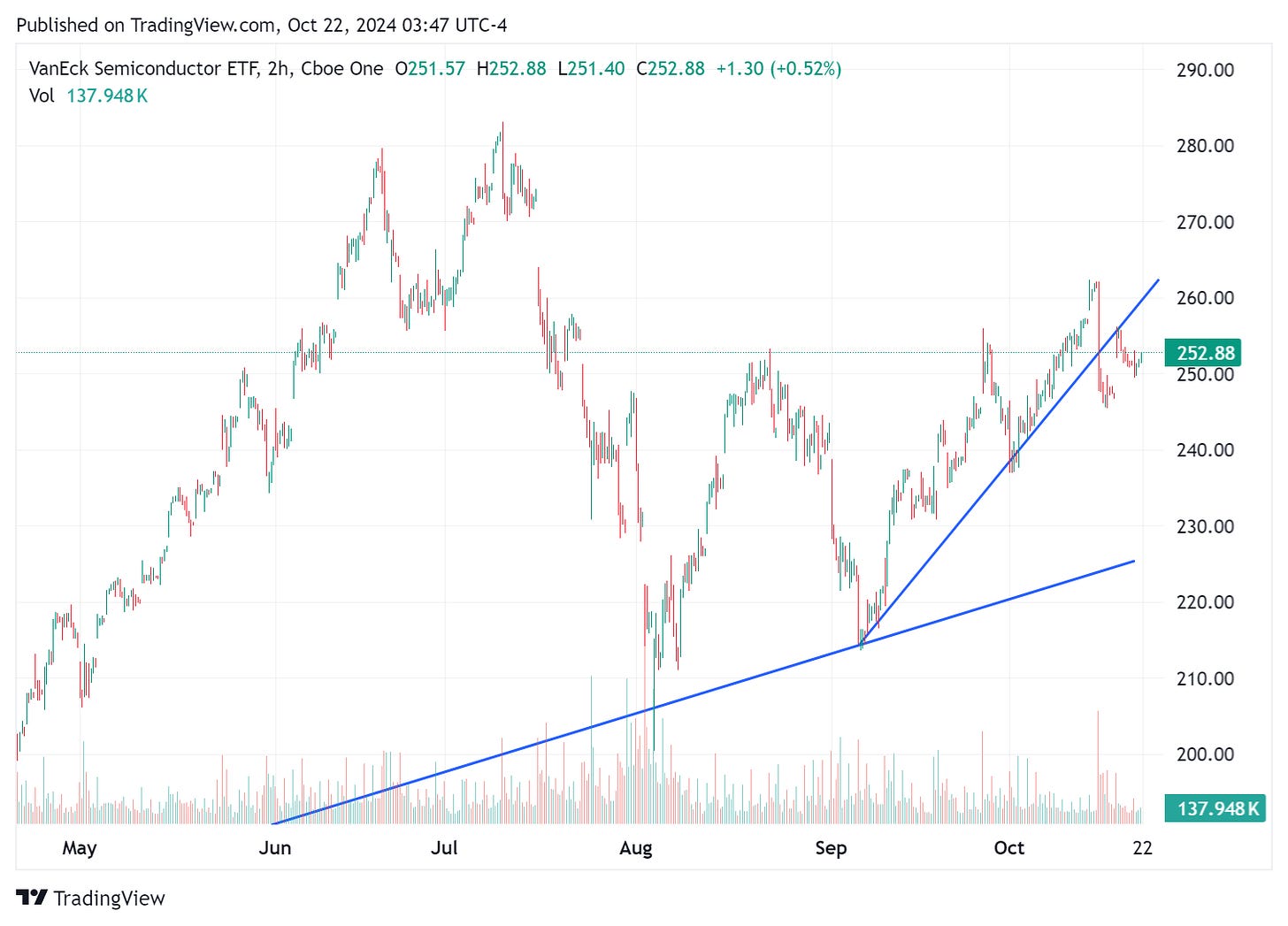
The Van Eck Semi ETF is far from its ATHs, as most semiconductor stocks are.
The bull tide lifting all the AI semiconductor boats period may have ended, and a bifurcation in a small group of AI winners (TSM, NVDA, etc.) and a “giant” bunch of neutrals or losers may be in the making.
(3) Backing it up: Notable market developments
Trading NVIDIA around earnings, there are multiple strategies to consider depending on one’s market outlook and risk tolerance. Key approaches for playing the stock pre- and post-earnings entail ETFs, LEAPS, and options-based strategies.
Pre-Earnings Play:
Leading up to earnings, implied volatility often spikes as traders anticipate significant price movements. This increase in volatility presents opportunities and risks.
Buying Calls/LEAPS for Bulls:
If you’re bullish, purchasing calls or LEAPS (Long-Term Equity Anticipation Securities) can offer substantial upside without purchasing the stock outright. Calls with expiration dates several months out allow for profit on price increases, while LEAPS provide longer-term exposure to NVIDIA’s potential growth.
Bearish Strategies:
If sentiment or the earnings whisper numbers suggest a miss, you might consider buying puts or using bear spreads to benefit from a potential decline. These strategies help minimize risk while allowing for significant profit if the stock price falls after earnings.
Straddles and Strangles:
For traders who expect big price swings but are unsure of the direction, a straddle (buying both a call and a put at the same strike price) or a strangle (buying a call and a put at different strike prices) can capitalize on volatility. If NVIDIA moves sharply, either up or down, these strategies can result in profits regardless of the direction.
Post-Earnings Play:
Once earnings are released, volatility tends to collapse—often called the “volatility crush.” If not managed carefully, options traders can see a rapid decrease in the value of their positions.
Volatility Crush:
After earnings, the drop in implied volatility can erode the value of options, even if the stock moves in the predicted direction. Timing becomes critical to avoid losses caused by this sharp decline in option premiums.Profit-Taking on Winning Positions:
It’s important to take profits on successful pre-earnings trades soon after the earnings release to lock in gains. Holding options too long after the report can lead to the erosion of profits due to time decay and volatility crush.Adjustments on Losing Trades:
For positions that didn’t play out as expected, consider adjusting by rolling options to a later date or a different strike price. This can provide additional time for the trade to recover if you still believe in the direction but were early on the timing.
Long-Term Play with LEAPS:
LEAPS can be an effective tool for those looking to hold NVIDIA for the long term. Based on NVIDIA’s earnings guidance and market outlook, LEAPS can benefit from long-term price appreciation while limiting the upfront capital required compared to buying shares.
With a long-dated expiration, LEAPS reduce the pressure from short-term volatility and offer exposure to NVIDIA’s growth over a horizon of 1-2 years.
(4) Now what?
Whether you’re bullish, bearish, or just looking to capitalize on the expected surge in volatility, several ETFs and options strategies exist to play Nvidia pre- and post-earnings.
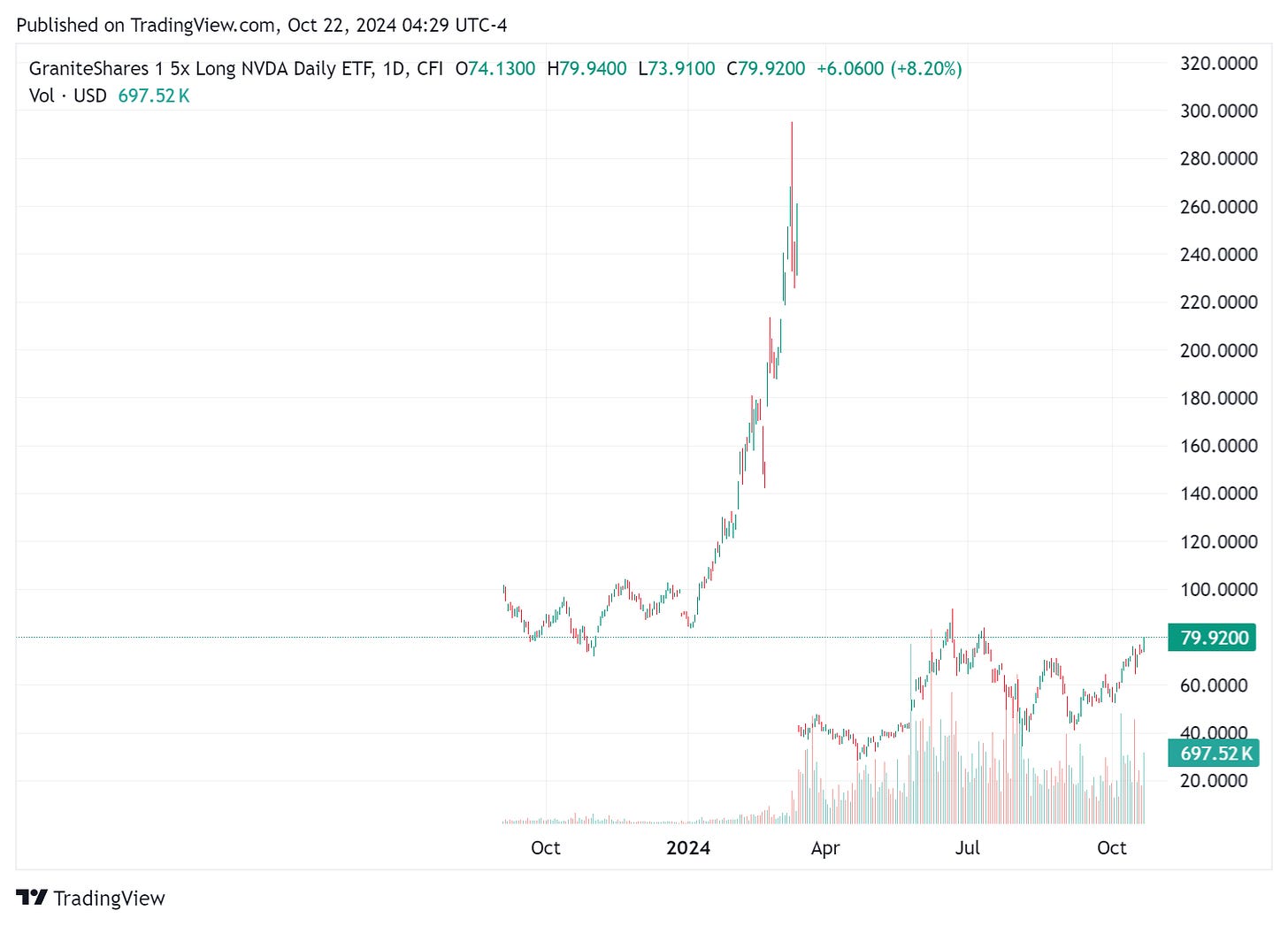
Bullish ETFs:
For traders expecting strong earnings and a continuation of NVIDIA’s upward momentum, these ETFs offer long exposure, with some providing leverage for greater potential gains:
Direxion Daily NVIDIA Bull 1.5X Shares: Provides 1.5x leverage on NVIDIA’s daily performance. The expense ratio for NVDL is 0.96%. This means that for every $1,000 invested in the ETF, you would pay $9.60 annually in management fees.
The Direxion Daily NVDA Bull 2X Shares is a 2x leveraged ETF that provides 200% of the daily performance of NVIDIA's stock. The expense ratio for this ETF is 1.04%, which includes management fees and other expenses.
GraniteShares 1.5X Long NVIDIA Daily ETF: Similar to NVDL, this ETF also offers 1.5x daily long exposure. The GraniteShares 1.5X Long NVIDIA Daily ETF has an expense ratio of 0.99%.
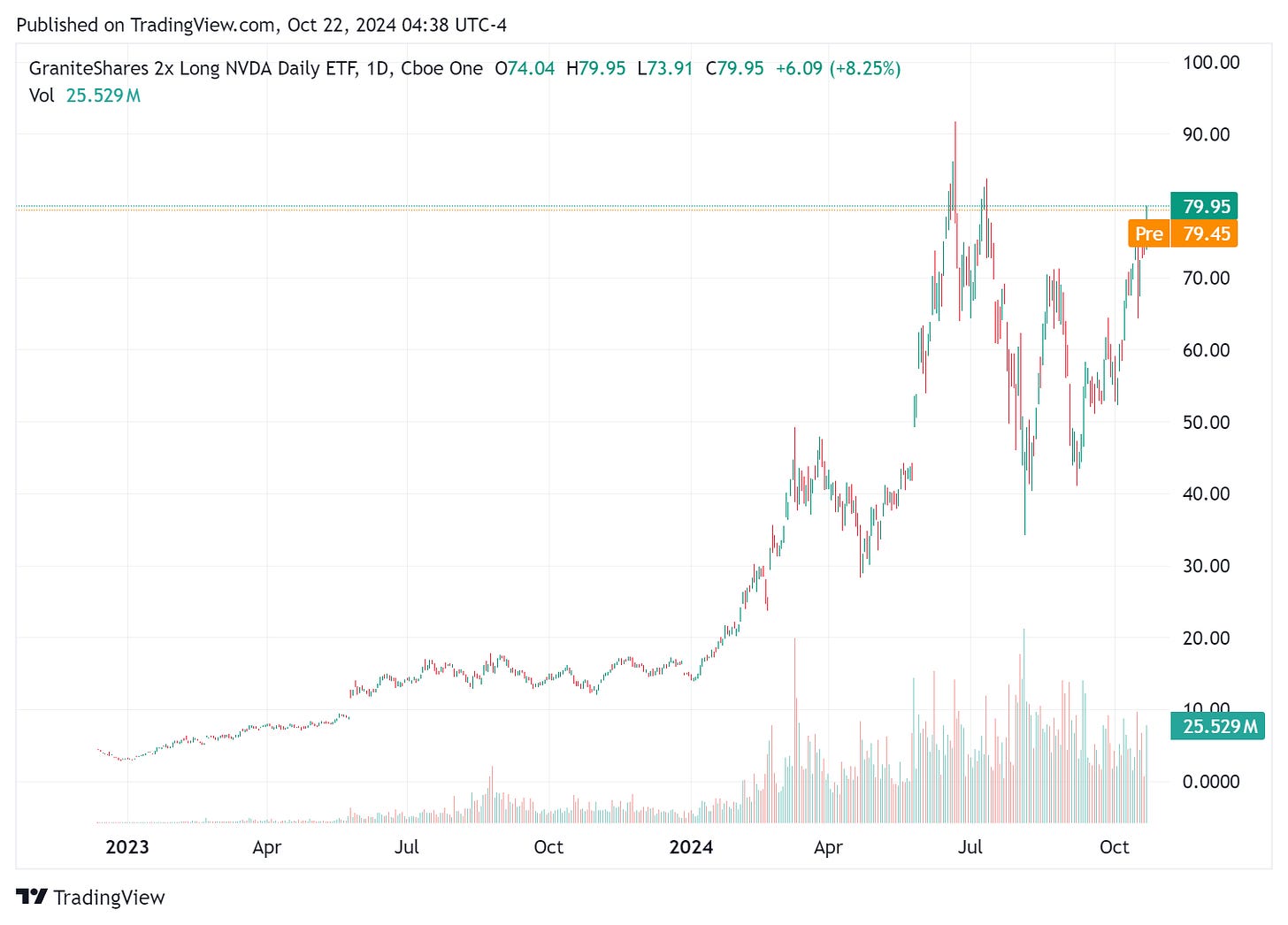
Bearish ETFs:
If you expect NVIDIA to miss earnings or issue disappointing guidance, these inverse ETFs provide exposure to the downside:
Direxion Daily NVIDIA Bear 1X Shares: This ETF gives investors inverse (-1x) exposure to NVIDIA’s daily performance. The Direxion Daily NVIDIA Bear 1X Shares (NVDD) has an expense ratio of 0.96%.
GraniteShares 1.5X Short NVIDIA Daily ETF: This ETF provides 1.5x inverse exposure to NVIDIA’s price movements for more aggressive bearish plays. The GraniteShares 1.5X Short NVIDIA Daily ETF has an expense ratio of 0.99%.
GraniteShares offers the GraniteShares 2x Short NVDA Daily ETF, which provides 2x inverse exposure to NVIDIA’s daily price movements Direxion. This ETF is designed to deliver -200% of NVIDIA’s daily performance, meaning it seeks to double the inverse of NVIDIA’s stock price on a daily basis.
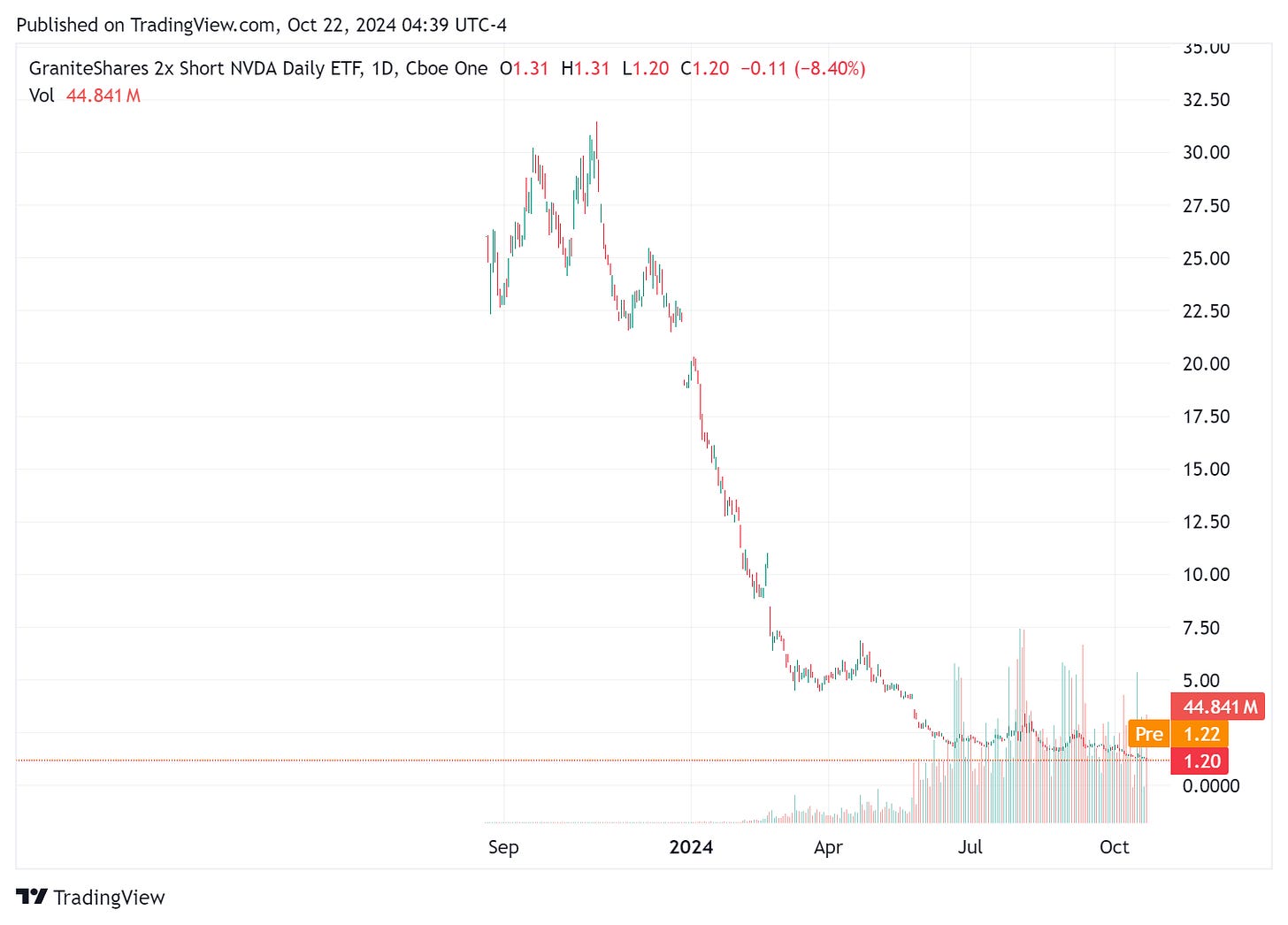
Leveraged ETFs for Broader Semiconductor Exposure:
While not exclusively focused on NVIDIA, these leveraged ETFs provide broader exposure to the semiconductor sector, with NVIDIA being a key component:
Direxion Daily Semiconductor Bull 3X Shares: Offers 3x daily long exposure to the semiconductor sector, heavily influenced by NVIDIA’s earnings and performance.
Direxion Daily Semiconductor Bear 3X Shares: Provides 3x inverse daily exposure, useful for those looking to bet against the semiconductor sector.
Options-Based ETF:
For those looking for income generation while holding NVIDIA, this ETF uses an options-based strategy:
Global X YieldCo Index ETF: Employs a covered call strategy on NVIDIA to generate income from option premiums while maintaining exposure to the stock. Suited for investors looking for moderate upside with income from call writing. The Global X YieldCo Index ETF has an expense ratio of 0.60%.
(5) And next?
Once NVIDIA reports earnings, the landscape for traders shifts dramatically. Implied volatility, which typically spikes before the announcement, collapses after the release—a phenomenon known as the “volatility crush.”
As a result, options premiums decrease significantly, offering new opportunities for traders to establish longer-term positions at a lower cost.
Post-Earnings Play:
Buying Long-Term Options After the Volatility Decline:
As options prices drop post-earnings due to the decline in implied volatility, it may be an excellent time to buy long-term options (like LEAPS) in the direction indicated by NVIDIA's earnings report. For example, if NVIDIA provides strong guidance, buying LEAPS call options could allow traders to capitalize on the stock’s potential growth while avoiding the high volatility typically associated with short-term trades.Straddle or Strangle for Extended Volatility:
On the other hand, if volatility remains elevated or NVIDIA's report introduces uncertainty, straddle or strangle strategies can still effectively capture further price swings. This is especially true if the stock continues to react to the news in the days following the earnings release, allowing traders to profit from continued volatility.
Keep reading with a 7-day free trial
Subscribe to Closelooknet to keep reading this post and get 7 days of free access to the full post archives.




